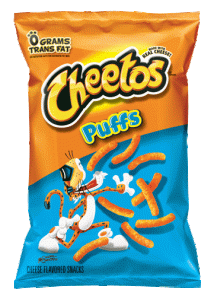By Joy Bauer, M.S., R.D., C.D.N.
Can you relate to this very typical diet story? You start off super-committed and the pounds fly off. But a few weeks or months later, your enthusiasm and motivation start to peter out, as do the losses on the scale.
If you’re in this boat (or expect to be soon), these weight loss strategies promise to keep things fresh so you don’t lose steam.
Try journaling (not just your food!).
Keep a special diary to record and process your feelings, challenges, and successes along your weight loss journey. Also jot down the reasons you committed to losing weight in the first place and some of the best “perks” that you’ve experienced so far (maybe it’s an array of complements, or a once-uncomfortable task you can now do with ease). Re-read your entries often to keep your motivation from stalling.
Micromanage.
Set small goals (i.e., no eating after dinner for a week, or losing 2 pounds this week) and reward yourself after every achievement. Treat yourself to a manicure, a new book, clothes (in your new, smaller size!), a stylish haircut, or another special prize each time you pass another mini-milestone.
Spice up your food.
If you’re sick to death of oatmeal, tossed salad, and grilled chicken, it’s time for a menu overhaul. Follow these three tips to reignite your taste buds.
- Don’t repeat the same meal two days in a row.
I can appreciate how easy—and convenient—it is to fall into the same food routine, but that can get old fast. Instead, go out of your way to vary up your breakfast, brown bag lunches, and at-home meals to break through the boredom. - Buy a healthy cookbook for creative inspiration.
Work your way through the book one recipe at a time and try all sorts of new, interesting flavors. It’s just like the movie Julie and Julia! - Experience healthy ethnic cuisine.
Japanese, Thai, Vietnamese, Mediterranean, and South American cuisines can be very light and refreshing, and they’re full of delicious flavors and fresh produce. Just choose wisely (no tempura or pasta alfredo, please).
Jazz up your fitness routine.
It may just take some new, high-energy music downloads to rekindle your relationship with exercise. If you belong to a gym but always hit up the same cardio machines, start sampling some of the group fitness classes offered at your club (I promise, you won’t be the only newbie there!). Or, try taking your workout outside, where you can walk or jog a different route every day. The change of scenery will keep things from getting stale.
Here’s one of my absolute favorite strategies for helping people stick with their exercise routine: buy books on tape (or audiobooks for your iPod) and make a deal with yourself that you’re only allowed to listen to the books while moving (walking outdoors or on a treadmill, riding a stationary bike, etc.). As long as you pick interesting books, you’ll be so engaged in the storyline, you’ll actually look forward to working out so you can hear the next chapter unfold!
If all else fails, GO SHOPPING!
Stand in one of those 180 degree mirrors and really study yourself wearing a smaller pair of jeans. Celebrate your new figure and all the hard work you’ve put into getting to this point.
No doubt about it, losing weight is a struggle at times, but almost every “big loser” will tell you it’s worth the effort. Stay strong and focused…your goal is within reach!
For more info on losing weight and healthy living, visit joybauer.com and follow Joy on Facebook and twitter.
Follow Kaeng Raeng on Facebook.




